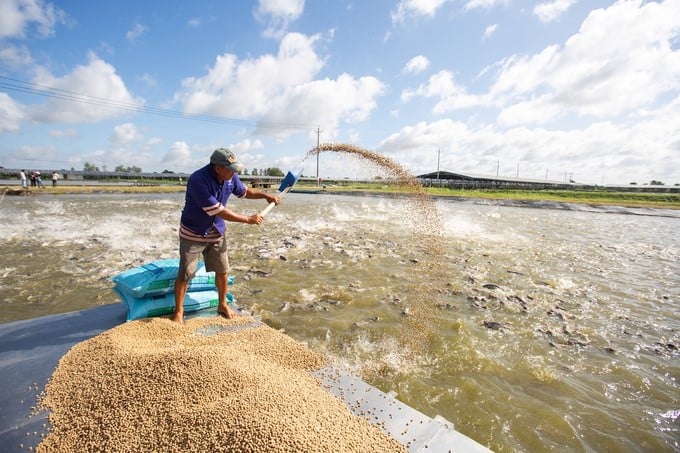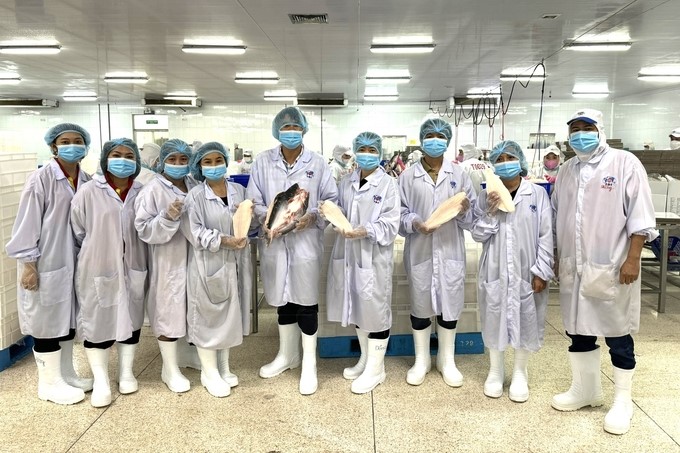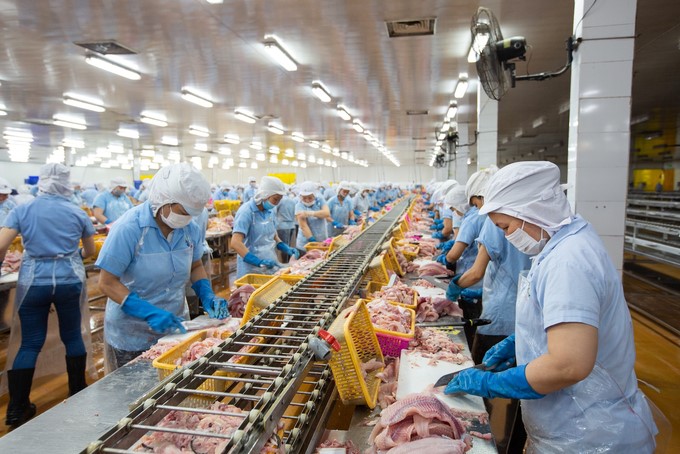May 22, 2025 | 17:27 GMT +7
May 22, 2025 | 17:27 GMT +7
Hotline: 0913.378.918
May 22, 2025 | 17:27 GMT +7
Hotline: 0913.378.918

The number of catfish is lost up to 30–50% during the commercial farming stage. Photo: ACIAR.
The "Food loss in the catfish value chain in the Mekong River Basin" project is co-sponsored by the Australian Center for International Agricultural Research (ACIAR) and the International Development Research Center (IDRC).
The project aims to identify current and future food loss and waste situations in the catfish supply chain in the Mekong River Basin in Vietnam, Laos, and Cambodia and develop intervention solutions to reduce losses.
One of the project's main goals is to increase the research capacity on food loss for researchers in the three countries participating in the project. They have been trained on value chain, social research, and skills in data collection and interaction with businesses and stakeholders.
The groups were also trained on the foresighting technique to analyze risks by envisioning probable developments in the catfish supply chain in the future.
After training, the project has built and tested value chain research tools to serve the data collection expected to take place in July and August 2024. The project's main research objective is to evaluate key value chains in the catfish industry in Vietnam, Laos, and Cambodia.
Because women and men both play important roles in catfish production processes in the supply chain, the project team also researched gender documents for research activities.
In May 2024, the University of Adelaide's Center for Global Food and Resources organized a workshop with the participation of researchers in all three countries to identify key catfish value chains, evaluate progress, and agree on an approach along the pangasius value chain, focusing on the Mekong Delta region of Vietnam. Each country then agreed on key catfish value chains to include in research activities.
Initially, research groups in each country conducted meetings and interviewed key informants in the supply chain. Losses and wastage of raw materials and value (money) are recorded along the chain, from catfish parents to fingerlings, raised on the farm, transported from the farm to the factory, processed, and consumed.

Vietnam's researchers visited the Sao Mai catfish processing factory in Dong Thap province in February 2024. Photo: Trinh Thi Lan, An Giang University.
Scientists then converted the value of these losses into money while also recording other forms of loss, revealing a significant total loss occurring across the entire catfish industry.
This is just an initial preliminary study. A larger-scale survey will be conducted in 2024 to refine the value chain analysis and better understand food loss and waste, as well as losses in other supply chains.
However, the initial preliminary research results have shown significant losses in the supply chain, especially in the stages of breeding, commercial growing, harvesting, transportation, and processing. Interviews with fingerling farmers, commercial farmers, transporters, and factories in An Giang province in January 2024 provided the following information:
+ Fingerling stage (90 days): The survival rate was previously 10–12% and has now decreased to 2–3%; the highest survival rate today is 5% on average.
+ Commercial farming stage (8–10 months): Fish loss is up to 30%–50% of fish heads. Extended fish harvest time will cause economic losses due to the loss of additional feed costs, and oversized fish will have to be sold at a lower price. Other losses include wasting sediment and farm water, which could be used to make organic fertilizer and artemia to raise pangasius seed but are not fully utilized.
+ Harvesting at the farming pond: Head loss rate is 1–2%; selling price reduced by 86% for dead fish (dead fish selling price is VND 4,000/kg, compared to live fish of VND 28,000/kg).
+ Transportation: loss of 4–5% from the pond to the rowboat and 1–2% on the rowboat during transportation; 86% discount on dead fish.
+ Processing: percentage of loss varies depending on fish size and quality, technical performance of fillet workers, and total inventory. Waste occurs when by-products such as fish blood are not utilized effectively. Fish skin, which was previously wasted, is now used to make high-value collagen products.

The ACAIAR project team improved understanding of the processing processes in the factory and physical loss assessment. Photo: ACIAR.
The project encountered many challenges in applying new concepts of foresighting, value chain mapping, and gender research in the catfish supply chain.
However, experts in these research fields have participated in training project staff, and as a result, the research capacity of the groups in the three Mekong River Basin countries has been significantly improved. This is all thanks to the interdisciplinary and comprehensive property of the team involved in the project.
By combining skills, the project team developed a specialist understanding of aquaculture, processing processes in the factory, and physical loss assessment. Economic and social researchers brought expertise in economic damage analysis, stakeholder mobilization, and ways of collaborating with external partners, including governments and businesses, to better understand food and non-food losses during the research process. The project's aim is to use this knowledge to develop strong intervention solutions to reduce food and non-food loss and waste in the catfish farming industry in the Mekong River Basin.
The project appreciates the contributions of research partners, including the Ministry of Agriculture and Rural Development, the Vietnam Directorate of Fisheries, the University of Economics Ho Chi Minh City, the New England University, the Swinburne University, the Australian National University, An Giang University - Vietnam National University Ho Chi Minh City, Royal University of Agriculture of Cambodia, Vinh Hoan Company Limited, Viet-Australia Joint Stock Company, Nam Viet Joint Stock Company, Sao Mai Joint Stock Company, and farmers and farming, processing, and transportation businesses participating in interviews.
Translated by Thu Huyen
![Reducing emissions from rice fields: [2] Farmers’ commitment to the soil](https://t.ex-cdn.com/nongnghiepmoitruong.vn/608w/files/news/2025/05/05/dsc08881jpg-nongnghiep-140632.jpg)
(VAN) Clean rice cultivation model in Thuong Tan commune, Bac Tan Uyen district, is assisting local residents in achieving sustainable agriculture by substantially reducing costs, increasing productivity, and protecting the environment.

(VAN) At the conference to disseminate Resolution No. 68, AgriS introduced its digital agricultural ecosystem and reaffirmed its commitment to accompanying the Government in promoting private sector development and sustainable agriculture.

(VAN) 'Blue Ocean - Blue Foods' initiative is designed to restore marine ecosystems and establish sustainable livelihoods for local communities by cultivating a minimum of 1,000 hectares of cottonii seaweed in the first three years.
/2025/05/21/4642-3-112707_603.jpg)
(VAN) The V-SCOPE project has made direct contributions to three out of six pillars of the Comprehensive Strategic Partnership between Vietnam and Australia.

(VAN) Facing the threat of rabies spreading to the community, Gia Lai province urgently carries out measures to vaccinate dogs and cats on a large scale.

(VAN) Disease-free livestock farming not only protects livestock herds but also stabilizes production and livelihoods for many farmers in Tuyen Quang.

(VAN) Japan's grant aid project contributes to capacity building, promoting organic agricultural production, and fostering sustainable community development in Dong Thap province.